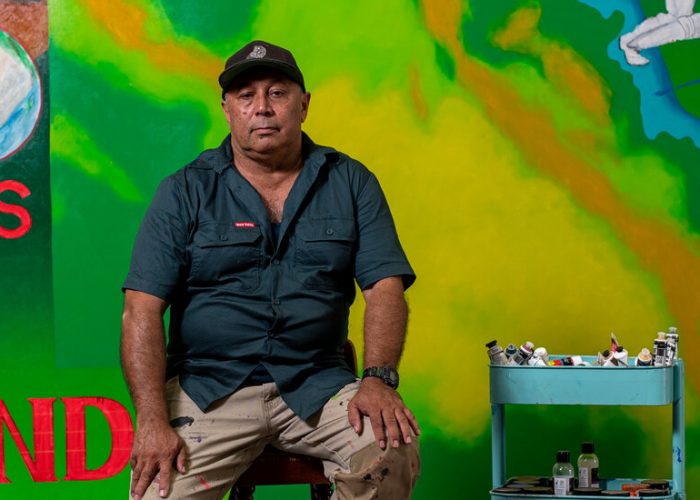Simmons deploys Klan imagery as well. He spoke of the dangers of using such symbolism, noting that it can become almost heavy-handed at times. But he recalled the American painter Philip Gustons own hooded figures a focus of recent controversy pointing out, I think that Gustons a master at that, and I think Gordon is the same.
Hookeys sense of satire allows people to not feel indicted, but part of the conversation, Simmons added.
Thought bubbles extending from some of Hookeys soccer players contain racial slurs directed at Aboriginal athletes. Such slurs, he explained are very similar to the N-word in many ways. But in these paintings, Hookey spells out these epithets in full. He even renders the bodies of athletes (like a childrens TV show might) in the shape of the slurs first letters.
When Hookey and Simmons converse, their exchanges seem permeated by a broader awareness of the bridges connecting Aboriginal Australians and Black Americans ongoing struggle for equality and social justice.
These are bridges that have been built and maintained by two communities over decades. According to the historian Rhonda Y. Williams in her book Concrete Demands: The Search for Black Power in the 20th Century,Black American servicemen, in the 1960s, passed on music and political information to Aboriginal people.In 1970, a group of Aboriginal activists spent time in the United States studying race relations The following year, still others established the Brisbane chapter of the Black Panther Party.
More recently, Aboriginal and Torres Strait Islander activists staged Black Lives Matter protests in Australia in solidarity with the U.S. movement. For many, George Floyds death last year was also a painful reminder of injustices closer to home: At least 434 Indigenous Australians have died in police custody since 1991, according to data released last summer.read more
Gordon Hookey and Gary Simmons: A Shared Language of Struggle


